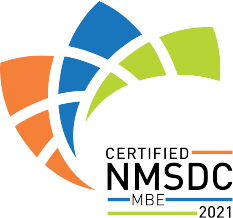
Quality: the deciding factor
While speed may dictate who wins an initial job or project in a long term business relationship, and everyone is always trying to reduce costs, quality is truly the deciding factor for every project. Quite literally, quality is execution. Great design doesn’t provide any value when it is executed poorly. Think about it: would you rather have the right product delivered late, or the wrong product delivered on time?
The problem: getting the right quality
In the world we live in today, each project has a sweet spot for where it lands on quality. However, unless you’ve launched something very similar in the past, the sweet spot for quality on any visual merchandising package will be uncovered during the design process – which takes time and effort. Then you’re in a catch 22 between spending enough time in development without overspending
The solution: messy progress
How do you get on the path to success without blowing the budget? The answer is messy progress. Don’t laugh, it’s true! Why spend hours upon hours in design software and then translate it into the world of physics vs. making it and putting it through its paces then making another one with the corrected features? While the impatient three year old in us stops its feet and covers their ears at the time and inexactness of multiple prototypes, how else can you be SURE the product will work in the real world and all the challenges it holds without actually doing it? The reality is, you can’t.
Managing expectations
Let’s be real. If someone promises you something without providing proof of concept, be prepared to be let down. A good supplier will let you know the options you have, and push back on what is unrealistic. Then you co-create your way to something that is both acceptable and achievable. The difficult part about that is you then may have to present the bad news to your boss about a pushed back timeline, which doesn’t look great on you. A way around it? Plan ahead and build in more time. You’ll always be happy you did.
Pick a partner that will go to bat for you
Bad things happen, it’s a fact. Unreliable supply chains, bad relationships, global pandemics, you name it. And they all affect you, your day, and your projects. So, while nailing each project 100% of the time is great, it’s important to have an insurance policy in case you don’t. That comes down to the supplier you pick. Think about any vendor and how they’ve responded to a previous problem: their speed, communication, accountability, cost sharing, etc. If they’re still with you, it’s probably because they make your life easier by navigating these difficult times together. If they’re no longer on your go-to list, they probably made your life more difficult. So plan ahead, because we’re humans and humans make mistakes, and be mindful of working with someone who you can count on to do the right thing if something goes wrong.
The end game
When you prioritize quality, commit to an iterative process, are realistic with your expectations, and have a partner that can perform under pressure – you’ve got all the ingredients for long-term success. In your company, branding, customers, retail spaces, life…it’s kind of the secret formula.
But here’s the thing – prioritizing quality doesn’t have to mean sacrificing speed and price. By focusing on quality, you can actually optimize your sales and increase efficiency. This means you can still deliver products and services quickly, while also ensuring they meet the high standards your customers expect. So a win-win-win!
At TGS Elevate, we specialize in wide format printing to 50-500 locations nationwide, design and fabricate custom millwork and metalwork, produce promotional products at a huge scale, and provide quality service every step of the way.
Jeff Lo is owner of TGS Elevate, a visual marketing / merchandising company that provides printing, point of purchase displays, and store fixture manufacturing, and in-store build outs for companies that have 50-500 locations nationwide.



